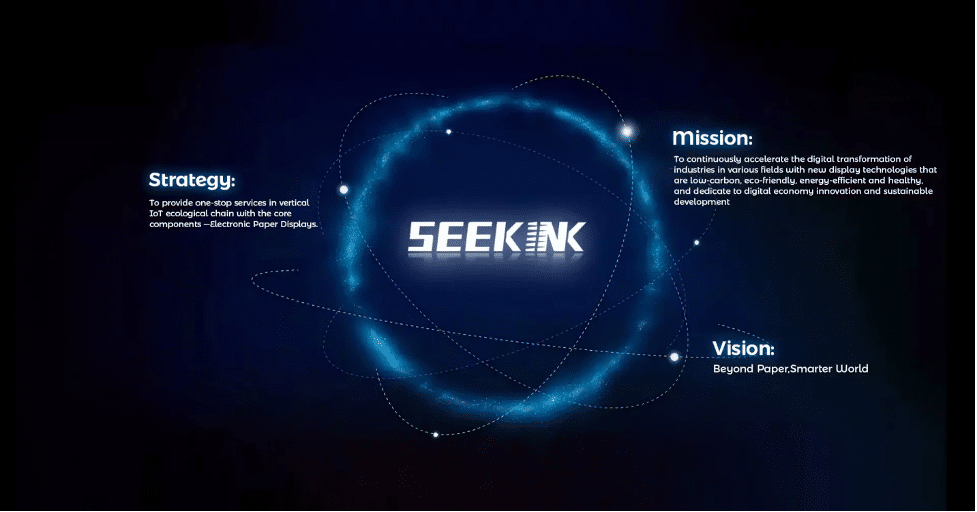E-paper display (EPD) and LCD are two distinct technologies that have seamlessly integrated into our daily lives. These displays serve as the visual interface for a wide range of electronic devices. While they both fulfill the fundamental role of showcasing information, there are key differences between the two that significantly impact their functionality and application. Read on to learn more.
Differences between E-Paper Display and LCD
E-paper display is a technology that relies on microcapsules that contain charged particles. It utilizes the manipulation of these particles to create visible images on the screen. LCD, or Liquid Crystal Display, on the other hand, employs liquid crystal molecules that can be controlled to allow or block the passage of light. Between EPD and LCD lies six fundamental distinctions. The following content unveils these differences in detail:
1. Color
One significant distinction between LCD and EPD lies in their color capabilities. LCDs offer a wide spectrum of colors, allowing them to display full-color images with vibrant hues. In contrast, E-paper can typically display black and white or grayscale images. However, it’s worth noting that some E-paper displays have expanded their color range to include shades like yellow and red with the help of RGB color filters.
2. Resolutions
One notable difference lies in screen resolution. E-ink displays generally offer lower resolutions compared to LCDs. The higher resolution of LCDs makes them particularly well-suited for video displays and other applications where finer details and clarity are crucial.
3. Flexibility
E-paper displays possess a high degree of flexibility, allowing them to be rolled or bent with ease to suit various form factors and applications. In contrast, LCDs lack this flexibility characteristic, making them less adaptable to unconventional or curved surfaces compared to the flexible E ink displays.
4. Readability in Sunlight
E-ink displays excel in sunlight readability because they are designed to reflect most of the ambient light that falls on them. The stronger the ambient light, the more clearly visible the electronic paper will be. Conversely, LCDs use a backlight to make the screen visible. In outdoor settings, this backlight can become overwhelmed by the strong sunlight, leading to reduced visibility, glare, and reflections on the screen.
5. Viewing Angle
EPDs are based on reflective technology, which means they rely on ambient light to illuminate the screen. This technology allows viewers to see the displayed content from a wider range of angles because the display is essentially reflecting light rather than emitting it. In contrast, LCDs have more limited viewing angles, which means that the optimal viewing experience is often restricted to specific angles in front of the screen.
6. Durability
E-paper displays are renowned for their durability. That is because E-paper displays are bi-stable, which means they only consume power when the image changes. Once an image is displayed on an E-paper screen, it requires no power to maintain that image indefinitely. A single charge can sustain the E-paper for years. In comparison, LCDs are generally less durable than their E-paper counterparts due to their continuous power consumption, which can lead to more frequent maintenance and shorter lifespans.
The Wide Applications of E-Paper Display and LCD
EPDs generally excel in ultra-low power consumption, high flexibility, and wide viewing angles, while LCDs offer wider color options and higher resolutions. With their distinct features, these two displays are applied in a wide spectrum of applications:
1. Smart Office
EPDs are the preferred choice for smart office solutions. The paper-like screens of E-readers and digital whiteboards are gentle on the eyes, prioritizing eye health during prolonged reading sessions. Thanks to their minimal power consumption, these readers allow extended operations without requiring frequent recharges.
2. Smart Transportation and Smart Advertising
Electronic paper displays are increasingly used in digital signage applications for their energy efficiency and readability in sunlight. They are widely used in indoor and outdoor commercial displays and public transportation information displays. However, LCDs are still the preferred option when it comes to dynamic commercial displays due to the higher resolutions and full-color display capabilities.
3. Smart Retail
The flexibility and minimal power consumption of EPDs render them a highly practical choice for electronic shelf labels (ESLs) within retail settings. They offer a dynamic pricing solution that significantly reduces the inconvenience of frequently changing shelf labels, particularly during holiday sales and promotional events. LCDs enable vibrant and dynamic video advertisements on the shelves. They provide a new way for in-store marketing, boosting sales and brand recognition by showcasing videos at the physical point of purchase.
Overall, EPDs and LCDs each have their niche in a diverse range of applications, with their unique features serving various purposes effectively. The choice between EPDs and LCDs depends on the specific application’s requirements and priorities. Therefore, it can be safe to assert that E-paper screens can replace traditional digital screens like LCD screens in specific contexts. Furthermore, with ongoing advancements in electronic paper technology, there is a possibility that EPDs might eventually completely replace LCDs.

Seekink Provides Reliable E-Paper Display Solutions
Seekink is committed to introducing eco-friendly display technologies to promote sustainability and help create a smarter world beyond paper. Its E-paper boasts a comprehensive size range spanning from 1 to 42 inches and a wide array of color options. These displays are renowned for their high contrast, wide viewing angles, exceptional reflectivity, and ultra-low power consumption. Moreover, they feature bi-stable displays, ensuring energy efficiency, and are designed to be gentle on the eyes.
For those seeking cutting-edge EPD solutions, Seekink stands as one of the most reputable E paper display manufacturers and solution providers. Visit Seekink’s website to discover more about their electronic paper displays.

